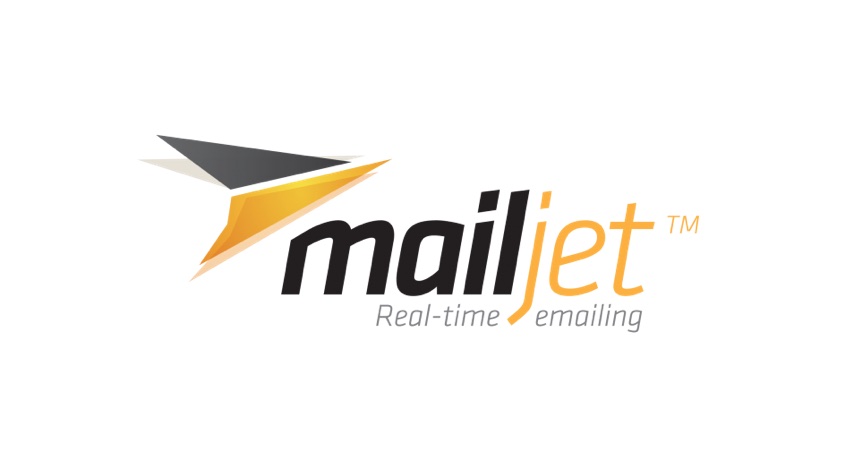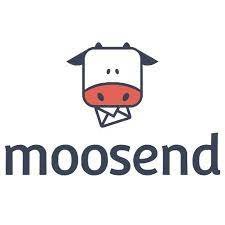Welcome to the ultimate showdown in the world of email marketing for 2024: Mailjet vs Moosend. As businesses continually search for ways to connect effectively with their audience, choosing the right email marketing tool is more crucial than ever. Today, we’re diving deep into a comparison of these two giants, dissecting their features, user experience, and overall value to help you make the most informed decision. So, let’s roll up our sleeves and get started!
| Mailjet | Moosend |
|---|---|
 |  |
| G2 Score – 4.0 out of 5 stars | G2 Score – 4.6 out of 5 stars |
| TrustRadius Score – 7.9 out of 10 | TrustRadius Score – 9.8 out of 10 |
Ease of Use: Navigating the Platforms
One of the first and most vital aspects to consider when picking an email marketing tool is its ease of use. After all, the last thing you want is to spend hours trying to figure out how to send a simple newsletter.
Mailjet’s User Interface: Flying High with Simplicity
Mailjet comes out of the gate with a user-friendly approach. Its dashboard is clean and uncluttered, offering a straightforward navigation experience. For beginners, this simplicity is a godsend. You’re greeted with an intuitive drag-and-drop email editor, making it a breeze to design professional-looking emails without needing to know a lick of coding.
The tool’s setup process is equally hassle-free. New users can quickly find their way around, thanks to the helpful prompts and guides sprinkled throughout the platform. This immediate comfort with the tool means you can start crafting your email campaigns almost immediately after signing up.
Moosend’s Approach: A Smooth Sail for Seasoned Marketers
Moosend, on the other hand, takes a slightly different approach. It’s designed with a bit more complexity, which might be more appealing to users with some experience in email marketing. The interface, while still user-friendly, packs in more features and options right from the main dashboard. This might be slightly overwhelming for newbies, but it’s a treasure trove for seasoned marketers who want more control and advanced options at their fingertips.
The email editor, much like Mailjet’s, is based on a drag-and-drop mechanism. However, Moosend steps up its game with a more extensive array of templates and customization options. It allows for a higher degree of personalization and creativity in your email designs, which can be a significant advantage if you’re looking to stand out in your audience’s crowded inbox.
The Verdict on User Experience
So, who wins in the ease of use category? It largely depends on who you are as a user. If you’re new to email marketing or prefer a more straightforward, no-fuss approach, Mailjet is your go-to. Its simplicity doesn’t sacrifice functionality, but it ensures you won’t get lost in a maze of features.
For the more experienced marketer who craves depth and a rich set of features, Moosend’s slightly steeper learning curve is a small price to pay. Its advanced options and greater scope for customization give you the tools to craft more complex, engaging, and personalized email campaigns.
Pricing and Plans: Finding the Best Value
When it comes to choosing an email marketing tool, pricing is often a deciding factor. Both Mailjet and Moosend offer a variety of plans to suit different needs and budgets, but how do they stack up against each other in terms of value for money?
| Mailjet | Free Plan: Includes up to 6,000 emails per month (with a daily limit of 200) and unlimited contacts. Basic features like email creation and sending are included. Essential Plan: Starting at around $15/month for 15,000 emails per month. This plan removes the daily sending limit and includes online customer support, no Mailjet logo, and sub-accounts. Premium Plan: Starting at around $25/month for 15,000 emails per month. Includes additional features like segmentation, A/B testing, marketing automation, and multi-user collaboration. Custom Enterprise Solutions: Offers custom volume of emails with advanced features and dedicated support. Pricing is custom and based on specific requirements. |
| Moosend | Free Plan: Offers access to basic features for up to 1,000 subscribers, including email campaigns, automation, and landing pages. Pro Plan: Pricing starts at $8 per month for up to 2,000 subscribers, with unlimited emails. Includes advanced features like transactional emails, landing page builder, and phone support. The price scales with the number of subscribers. Enterprise Plan: Custom pricing for businesses needing custom features like account management, SSO (Single Sign-On), and more. |
Mailjet’s Pricing Structure: Budget-Friendly for Starters
Mailjet offers a free plan, which is a great starting point for small businesses or individual marketers. This plan includes basic features like email sending and a limited number of contacts. It’s an excellent way for beginners to dip their toes in the email marketing waters without financial commitment.
As you scale up, Mailjet’s paid plans become more appealing. They’re structured to grow with your business, offering increased sending limits and more advanced features like segmentation and A/B testing as you move up the tiers. What’s attractive about Mailjet’s pricing is its flexibility; you can choose a plan that closely matches your current needs without paying for unnecessary extras.
Moosend’s Pricing Strategy: More Bang for Your Buck
Moosend also starts with a free plan, which is slightly more generous than Mailjet’s in terms of features and limits. This plan is ideal for small businesses or startups looking to explore more advanced aspects of email marketing without the initial investment.
As for its paid options, Moosend prides itself on providing more comprehensive features at each pricing level. Even at the lower tiers, you get access to some of the more advanced tools like automation workflows and detailed analytics. This makes Moosend an attractive option for businesses ready to dive a little deeper into email marketing strategies without breaking the bank.
Evaluating the Price-to-Value Ratio
In terms of sheer numbers, Moosend seems to offer a better deal, especially at the lower tiers. You get access to a wider range of features for a similar or even lower price than Mailjet. However, this doesn’t necessarily make Moosend the outright winner.
Mailjet’s simpler structure and lower entry-level pricing can be more appealing for those just starting or with minimal email marketing needs. The ability to upgrade and access more features as your business grows ensures that you’re not paying for more than what you use.
In contrast, Moosend’s all-in-one approach at each pricing tier might be more cost-effective for businesses that are certain about their email marketing strategies and are looking for a comprehensive tool from the get-go.
Email Automation Capabilities: Streamlining Your Marketing Efforts
A crucial feature of any email marketing tool is its automation capabilities. Automation not only saves time but also allows for more targeted and effective marketing campaigns. Let’s see how Mailjet and Moosend fare in this arena.
Mailjet’s Automation: Simplified and Efficient
Mailjet keeps its automation features straightforward yet effective. It offers basic automation options like welcome emails, birthday messages, and triggered emails based on user actions. These features are easy to set up, even for those who are new to email marketing automation.
While Mailjet might not boast the most advanced automation features in the market, it covers the essentials well. Its simplicity ensures that you won’t get bogged down in complex workflows, making it ideal for small to medium-sized businesses looking for basic but reliable automation capabilities.
Moosend’s Automation: Advanced and Customizable
Moosend steps up the game with its advanced automation features. It offers a wide range of pre-built automation templates, making it easier to start complex campaigns like abandoned cart emails, customer onboarding sequences, and more. Additionally, the ability to create custom workflows offers flexibility and depth for those who want to tailor their automation to specific needs.
Moosend’s real-time analytics and segmentation capabilities enhance its automation features, allowing for highly personalized and targeted email campaigns. This level of sophistication is particularly beneficial for businesses with more complex marketing strategies or larger audiences.
Comparing the Automation Tools
When comparing the two, Moosend clearly leads in terms of the breadth and depth of automation capabilities. Its range of features and customizability make it a robust tool for businesses looking to execute sophisticated, highly targeted email campaigns. On the other hand, Mailjet’s simpler automation features are perfectly suited for businesses that need basic automation without the complexity. It’s ideal for those who prefer an easier setup and management process, ensuring efficiency without the need for extensive technical know-how.
In summary, your choice between Mailjet and Moosend’s automation tools should align with your business’s specific needs. If you require advanced, customizable automation, Moosend is the way to go. However, if simplicity and ease of use are your priorities, Mailjet offers a solid and efficient solution.

Related: Check out our free SEO suite

Analytics and Reporting: Measuring Your Success
A crucial aspect of any email marketing campaign is the ability to track and analyze its performance. Both Mailjet and Moosend offer analytics and reporting features, but how do they compare in helping you measure your email marketing success?
Mailjet’s Analytics: Straightforward and Clear
Mailjet provides a clean and easy-to-understand analytics dashboard. It covers the basics like open rates, click rates, unsubscribe rates, and bounces. These metrics are crucial for gauging the overall effectiveness of your campaigns and understanding your audience’s engagement.
What stands out with Mailjet is the clarity of its reporting. The data is presented in a straightforward manner, making it easy for users of all levels to grasp their campaign’s performance quickly. This simplicity is particularly beneficial for smaller teams or those new to email marketing, where comprehensive data analysis might not be feasible.
Moosend’s Reporting: Detailed and Insightful
Moosend takes analytics a step further by offering more detailed and in-depth reporting features. Along with the standard metrics, you get advanced insights like click heat maps, device and location tracking, and even the ability to track individual subscriber activity. This level of detail is invaluable for fine-tuning your campaigns and understanding your audience on a deeper level.
Moreover, Moosend allows you to create custom reports and segment your data, offering a more tailored analysis of your campaigns. This feature is particularly useful for businesses with more complex marketing strategies that require detailed data analysis to make informed decisions.
Analyzing the Impact
In the battle of analytics and reporting, Moosend seems to have the upper hand, particularly for businesses that crave depth in their data analysis. Its comprehensive reporting tools provide valuable insights that can drive more informed and effective marketing decisions.
However, Mailjet’s simpler approach to analytics is not without merit. For many users, especially those with straightforward email marketing needs, the clear and concise presentation of key metrics in Mailjet can be more than sufficient. It ensures you can quickly gauge your campaign’s success without getting lost in data overload.
Deliverability: Ensuring Your Messages Reach the Inbox
One of the most critical aspects of email marketing is deliverability – the ability of your emails to successfully land in your recipients’ inboxes. Let’s compare how Mailjet and Moosend perform in this vital area.
Mailjet’s Deliverability: Reliable and Trustworthy
Mailjet has a strong reputation for high deliverability rates. It achieves this through a robust infrastructure and adherence to best email practices. Mailjet also offers dedicated IP options, which can be a significant advantage for larger businesses or those with high email volumes, as it allows for greater control over sender reputation.
Another plus for Mailjet is its proactive approach to managing deliverability. It includes regular updates and tips on best practices for maintaining a good sender reputation, which is crucial in the ever-evolving landscape of email marketing.
Moosend’s Deliverability Approach: Advanced and Comprehensive
Moosend also boasts impressive deliverability rates, supported by advanced technology and compliance with email standards. It uses sophisticated algorithms to optimize send times, ensuring emails land in the inbox when users are most likely to engage.
Additionally, Moosend provides detailed analytics on deliverability, allowing users to pinpoint and address issues that might affect their email performance. This level of detail helps in fine-tuning strategies to improve overall deliverability.
Weighing in on Inbox Success
Both Mailjet and Moosend offer excellent deliverability, but they approach it differently. Mailjet’s strength lies in its reliable infrastructure and dedicated IP options, making it a solid choice for businesses with large email campaigns. On the other hand, Moosend’s advanced algorithms and detailed deliverability analytics offer a more hands-on approach to managing and improving email performance. This can be particularly valuable for businesses that want to actively monitor and tweak their strategies for the best inbox placement. Both Mailjet and Moosend provide robust deliverability options. Your choice between them should consider the scale of your email campaigns and how much control and insight you want over your email deliverability.
Customer Support and Resources: Getting Help When You Need It
In the realm of email marketing, having access to reliable customer support and comprehensive resources can make a significant difference. Let’s see how Mailjet and Moosend stack up in terms of support and educational materials.
Mailjet’s Support: Accessible and Helpful
Mailjet offers various support channels, including email, live chat, and a comprehensive knowledge base. Their live chat feature is particularly noteworthy, providing quick and efficient answers to urgent queries. This immediate support can be invaluable, especially when dealing with time-sensitive email campaign issues.
Moreover, Mailjet’s knowledge base is extensive, covering a wide range of topics from basic setup to advanced campaign strategies. This resource is well-organized and easy to navigate, making it a useful tool for both beginners and experienced users.
Moosend’s Support System: Extensive and Educational
Moosend also provides a robust support system, including email, live chat, and a detailed knowledge base. Their support team is known for being responsive and knowledgeable, often going the extra mile to help users troubleshoot issues or optimize their campaigns.
In addition to traditional support channels, Moosend offers a wealth of educational content, including webinars, tutorials, and an insightful blog. These resources are not just about using the platform; they also offer valuable marketing advice and strategies, making Moosend a great learning resource for its users.
Evaluating Customer Support and Learning Resources
Both Mailjet and Moosend excel in providing quality customer support and educational resources. Mailjet’s straightforward and efficient support system is great for quickly resolving issues, while its knowledge base is a treasure trove of information for users at all levels. Moosend, with its comprehensive and educational approach, not only assists in resolving platform-related queries but also educates users on broader email marketing strategies. This makes it an excellent choice for those who are looking to learn and grow their marketing skills along with using the tool.
Integration Capabilities: Connecting with Other Tools
In today’s digital landscape, the ability of an email marketing tool to integrate seamlessly with other software is crucial. Let’s explore how Mailjet and Moosend fare in terms of integration with other digital tools and platforms.
Mailjet’s Integration Ecosystem: Simple and Effective
Mailjet offers a decent range of integrations with popular CRMs, eCommerce platforms, and other essential business tools. Its integration process is generally straightforward, allowing for easy syncing of data and automation of workflows between Mailjet and other software.
One of the strengths of Mailjet’s integrations is the simplicity in setting them up. Users do not need extensive technical knowledge to connect Mailjet with other tools. This ease of integration can be a significant time-saver, especially for smaller businesses or those with limited IT resources.
Moosend’s Integration Options: Extensive and Versatile
Moosend steps up with a more extensive list of integrations, covering a wide array of CRMs, eCommerce platforms, and other marketing tools. The platform’s ability to integrate with a broader range of software provides users with greater flexibility and customization in their marketing strategies.
Moreover, Moosend’s integrations are designed to maximize the efficiency of data use and automation. This extensive connectivity is particularly beneficial for businesses that rely on a complex ecosystem of digital tools, as it allows for more seamless and automated data flow across platforms.
Assessing Integration Flexibility
In the arena of integrations, Moosend appears to have an edge due to its wider range of options and the depth of integration capabilities. Its comprehensive approach caters well to businesses with more complex digital infrastructures. On the other hand, Mailjet’s more straightforward integration process is ideal for those who prefer simplicity and ease of use. It provides enough flexibility for most standard business needs without overwhelming users with complexity.
Conclusion
In conclusion, both Mailjet and Moosend are strong contenders in the email marketing arena for 2024. Mailjet shines with its user-friendly interface, straightforward pricing, and reliable deliverability, making it an excellent choice for beginners or businesses that value simplicity and efficiency. On the other hand, Moosend stands out with its advanced automation features, detailed analytics, extensive integration options, and robust educational resources, catering well to more experienced marketers or those needing a comprehensive tool.
Ultimately, the decision between Mailjet and Moosend hinges on your specific business needs, marketing strategies, and the level of complexity you’re comfortable managing. Whether you prioritize ease of use and straightforward functionality or seek advanced features and detailed analytics, one of these platforms is likely to meet your email marketing needs in 2024. Remember, the best tool is the one that aligns closely with your marketing goals and helps you effectively engage with your audience.
Read Next
- How I Achieved a 400% ROI with My Latest Email Marketing Campaign
- The Role of Automation in Modern Email Marketing
- The Science Behind Effective Email Marketing: What Drives Opens and Clicks?
- Crafting the Perfect Email: Positioning Your Brand for Success
- Top 3 Email Marketing Services to Boost Your Campaigns






















Comments are closed.